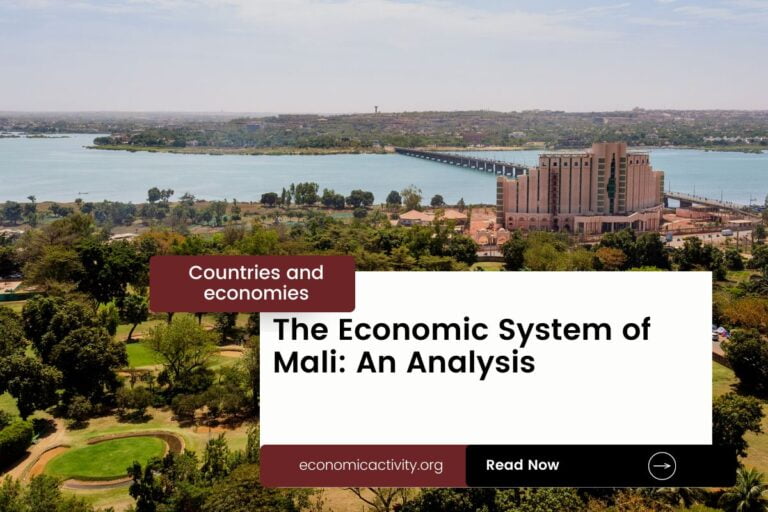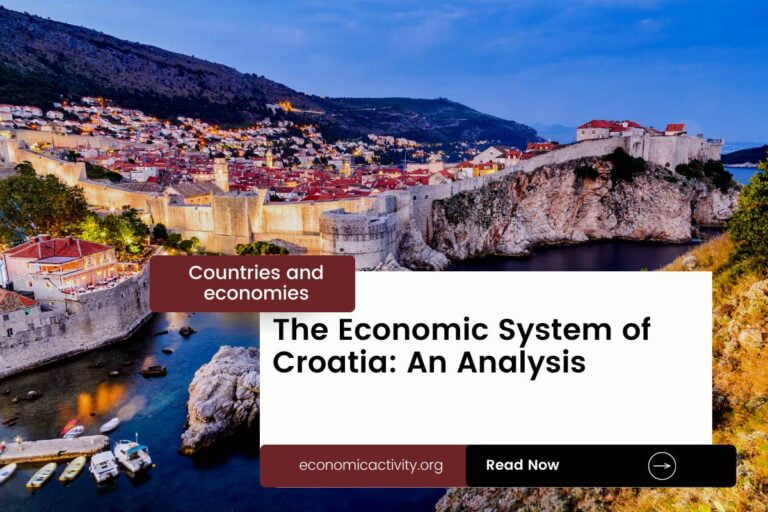Belize, with a population of 405,272, is ranked 164th, just behind the Maldives. Located in Central America, it covers 22,970 sq. km, ranking 141st, slightly below Djibouti.
Belize’s economic position in 2022 shows a GDP of 2,830,507,575.68 USD, ranking 165th globally. It falls behind Curacao, with a GDP of 3,075,180,834.72 USD. The GDP per capita in Belize is 6,984.22 USD, placing it at 91st position.
It is surpassed by Armenia, with a GDP per capita of 7,018.05 USD. Despite facing economic challenges, Belize continues to strive for growth and development in various sectors to improve its economic standing on the global stage.
What are the economic activities of Belize?
- Primary activities: 10.3% of GDP.
- Secondary activities: 21.6% of GDP.
- Tertiary activities: 68% of GDP.

Primary Sector of Belize
Belize’s primary sector, particularly agriculture, thrives due to its tropical climate and abundance of natural resources. With 7.98% of the land dedicated to agriculture, the country produces a diverse range of products including sugarcane, maize, bananas, oranges, soybeans, sorghum, chicken, rice, beans, and milk.
Despite agriculture contributing 10.3% to the GDP, its significance lies in the variety of crops and animal products produced, sustaining the country’s agricultural sector. The top ten agricultural products, based on tonnage, underscore the importance of agriculture in Belize’s economy.
Blessed with diverse geology, Belize boasts abundant natural resources. Arable land potential fuels agriculture, while timber and fish support industries. Hydropower contributes to a sustainable economy.
Additionally, Belize’s oil production of approximately 1,028 barrels per day places it at the 66th position in the world ranking. With oil reserves totaling 6,700,000 barrels, the country holds a mere 0.0% of the world’s oil reserves.
Secondary Sector of Belize
What is the secondary sector or what are secondary activities?
The secondary sector encompasses industries in Belize that transform raw materials into finished products for consumption. Main industrial products include garment production, food processing, construction, and oil refining. These goods are manufactured for domestic consumption and export, contributing significantly to the country’s economy.
Manufactures in Belize’s total exports hold a minimal share of 2.99% in 2023, indicating their lack of significant contribution to the country’s export economy.
Tertiary sector of Belize
What is the tertiary sector or what are tertiary activities?
The tertiary sector in Belize encompasses services that provide knowledge and expertise to enhance productivity and meet needs. Key activities include restaurants, healthcare, education, banking, communication, media, tourism, and transportation. These services contribute significantly to the country’s economy and overall development.
Highlighting these, Belize’s economy heavily relies on tourism, contributing significantly to its GDP. With 1,674,000 annual arrivals, tourism plays a crucial role, attracting visitors at a rate of 4.1306 tourists per capita. The country’s pristine beaches, like Ambergris Caye, and the ancient Mayan ruins of Caracol are among the most popular destinations.
Another example of tertiary economic activity is the mobile cellular sector, with approximately 264,000 subscriptions, supporting technological growth. This connectivity fosters innovation, enhancing business operations and communication.
Military Activities and Economic Sectors of Belize
The military is an example of many economic activities in a country. In Belize, the military supports the primary sector by using resources for defense. The secondary sector is involved in making military equipment. The tertiary sector provides services, while the quaternary sector focuses on military research and development. Finally, the quinary sector includes high-level decision-making and strategy for the military.
In 2023, Belize’s military expenditure was 26.5 million US dollars, which is 0.86% of the country’s GDP. The active military force has 1,500 personnel, resulting in about 6.1 active military members for every 1,000 people in the population.
International Trade of Belize
Import Activities of Belize

Belize’s high import activities, accounting for 55.58% of GDP, play a crucial role in meeting domestic demand and driving economic growth.
Belize’s main import activities include refined petroleum, ships, tobacco, garments, and plastic products. The country’s top import partners are the US (33%), China (23%), Guatemala (9%), Mexico (8%), and Canada (3%).
Exports Activities of Belize

Belize’s total exports in 2023 amounted to $253,373,381.83, with exports contributing to 52.37% of the country’s GDP. This high percentage underscores the critical importance of export activities to Belize’s economy.
Belize’s export activities are diverse, with raw sugar, bananas, shellfish, bran, and refined petroleum being key commodities. The country’s top export partners are the US, UK, Guatemala, Spain, and Honduras, with the US accounting for 22% of exports.
Belize economy challenges in 2024
In 2024, Belize faces challenges in sustaining its tourism- and agriculture-driven economy amidst global uncertainties. Despite a strong post-pandemic rebound, the country grapples with environmental threats and the need for sustainable development. The innovative bond restructuring has helped lower public debt, but more efforts are needed to address social inequalities and climate change impacts. The central bank’s USD-denominated treasury notes offer stability, but high mobility across borders poses security risks.




Leave a Reply